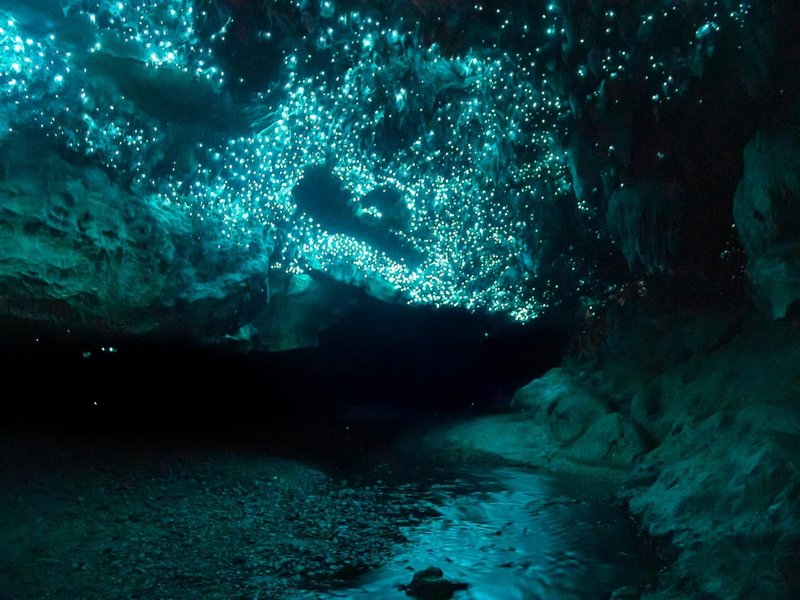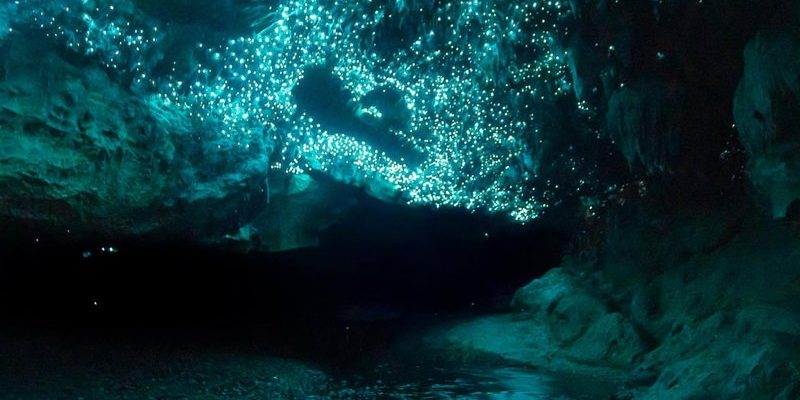
Glow worms are not your typical worms; they’re the larvae of a type of fly called *Arachnocampa*. When you think of them, picture a tiny, luminous critter casting its glow to attract prey. Caves in New Zealand provide the perfect environment for these glow worms to develop and thrive, thanks to the stable humidity and darkness. Here’s the thing: glow worms don’t just light up caves for show; they use their bioluminescence strategically to lure in unsuspecting insects. How cool is that?
What Are Glow Worms?
Glow worms, particularly the *Arachnocampa luminosa*, are unique to New Zealand and parts of Australia. They belong to a group of insects known as dipterans, which means “two wings.” But what makes glow worms stand out is their remarkable ability to produce light. This bioluminescence is due to a chemical reaction in their bodies involving a pigment called luciferin. This natural glow is similar to the way fireflies light up during summer nights, but glow worms have mastered this craft in even darker places.
The glow you see isn’t just for aesthetics—it plays a vital role in their survival. The light attracts flies and other small insects, which become trapped in silk threads that the glow worms hang from cave ceilings. It’s a clever hunting strategy, much like setting a trap or casting a fishing line into a stream. Imagine sitting in a dark cave, surrounded by thousands of glowing lights that are all working together to capture dinner.
Life Cycle of a Glow Worm
So, what’s the life cycle of a glow worm like? It starts with an egg. Female glow worms lay their eggs in damp areas of caves, and these eggs hatch into larvae after about two weeks. Once hatched, the larvae go through several stages of growth called instars, during which they start to develop their unique glowing abilities.
During this larval stage, glow worms can live for about six months to a year, depending on environmental conditions. They create intricate silk threads hung from the cave ceilings, helping them trap food. As they mature, they’ll eventually transform into pupae, going through a cocoon-like phase that lasts about 10 days. After this, the adult flies emerge, ready to start the cycle all over again. However, adult glow worms don’t glow and have a very short lifespan of only a few days to mate and lay eggs.
Where Can You Find Glow Worms in New Zealand?
New Zealand is home to several caves where you can marvel at glowing wonders. Some of the most famous spots include:
- Waitomo Caves: Perhaps the most well-known, these caves offer guided tours through stunning underground caverns filled with glow worms. Visitors often describe it as a surreal experience.
- Te Anau Glowworm Caves: Located on the South Island, these caves also provide boat tours that let you float gently under the glowing ceiling.
- Abel Tasman National Park: While primarily known for its breathtaking landscapes and hiking trails, it’s also a great spot for discovering glow worm grottoes.
Each of these sites offers a unique perspective on the glow worm experience. Some are accessible by guided tours, while others allow for more adventurous explorations. Just remember to respect the natural habitat while you enjoy their mesmerizing glow!
Why Are Glow Worms Important?
Glow worms play a crucial role in their ecosystems. Their presence indicates a healthy environment, as they thrive in clean water and air. Moreover, they help maintain the delicate balance of the cave ecosystem by providing a food source for various predators, including bats and other insects.
Additionally, scientists study glow worms for their bioluminescent properties. This research can lead to advancements in various fields, from medicine to environmental science. For example, understanding how glow worms produce light can inspire new technologies for sustainable lighting or innovative approaches to pest control.
Plus, let’s not forget the tourism aspect! Glow worm caves attract thousands of tourists every year, contributing to New Zealand’s economy and raising awareness about the importance of conservation.
Conservation Efforts and Challenges
Despite their fascinating nature, glow worms face threats from habitat destruction and pollution. As tourist spots become more popular, it’s crucial to have responsible practices in place. Caves can be sensitive environments, and too much foot traffic or negligence can disrupt the natural habitat.
Organizations and local communities are working hard to promote conservation. This includes controlling visitor numbers, implementing educational programs, and protecting cave ecosystems from pollution. So, when you visit these beautiful caves, be a mindful traveler—stick to marked paths and avoid touching or disturbing the creatures.
Glow worms in New Zealand caves create a magical, twinkling experience that highlights the wonders of nature. These tiny larvae, with their impressive hunting tactics and bioluminescence, not only capture our imaginations but also play vital roles in their ecosystems. Whether you’re exploring the famous Waitomo Caves or discovering hidden grottoes, encountering these glow worms is sure to leave you in awe.
As you ponder on how these remarkable creatures live and thrive in darkness, remember to appreciate the delicate balance of nature they represent. Let’s continue to support conservation efforts, ensuring that future generations will enjoy the spectacle of glow worms lighting up New Zealand’s caves. After all, it’s not just about the journey to see the glow; it’s about understanding and respecting the life behind it.

